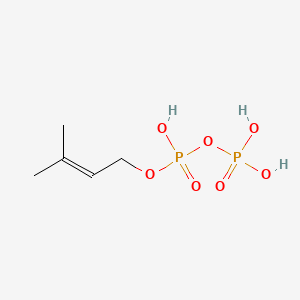| Schnee C et al. |
The maize gene terpene synthase 1 encodes a sesquiterpene synthase catalyzing the formation of (E)-beta-farnesene, (E)-nerolidol, and (E,E)-farnesol after herbivore damage. |
2002 |
Plant Physiol. |
pmid:12481088
|
| Cervantes-Cervantes M et al. |
Maize cDNAs expressed in endosperm encode functional farnesyl diphosphate synthase with geranylgeranyl diphosphate synthase activity. |
2006 |
Plant Physiol. |
pmid:16581875
|
| Clastre M et al. |
Subcellular evidence for the involvement of peroxisomes in plant isoprenoid biosynthesis. |
2011 |
Plant Signal Behav |
pmid:22080790
|
| Okada K et al. |
Antisense and chemical suppression of the nonmevalonate pathway affects ent-kaurene biosynthesis in Arabidopsis. |
2002 |
Planta |
pmid:12029484
|
| Zeidler J and Lichtenthaler HK |
Biosynthesis of 2-methyl-3-buten-2-ol emitted from needles of Pinus ponderosa via the non-mevalonate DOXP/MEP pathway of isoprenoid formation. |
2001 |
Planta |
pmid:11469599
|
| Wu S et al. |
Engineering triterpene metabolism in tobacco. |
2012 |
Planta |
pmid:22729821
|
| Arimura G et al. |
Herbivore-induced terpenoid emission in Medicago truncatula: concerted action of jasmonate, ethylene and calcium signaling. |
2008 |
Planta |
pmid:17924138
|
| Suzuki N et al. |
Construction and analysis of EST libraries of the trans-polyisoprene producing plant, Eucommia ulmoides Oliver. |
2012 |
Planta |
pmid:22729820
|
| Sabehi G et al. |
New insights into metabolic properties of marine bacteria encoding proteorhodopsins. |
2005 |
PLoS Biol. |
pmid:16008504
|
| Nair SC and Striepen B |
What do human parasites do with a chloroplast anyway? |
2011 |
PLoS Biol. |
pmid:21912515
|
| Yeh E and DeRisi JL |
Chemical rescue of malaria parasites lacking an apicoplast defines organelle function in blood-stage Plasmodium falciparum. |
2011 |
PLoS Biol. |
pmid:21912516
|
| Vinella D et al. |
Iron-sulfur (Fe/S) protein biogenesis: phylogenomic and genetic studies of A-type carriers. |
2009 |
PLoS Genet. |
pmid:19478995
|
| Brilli F et al. |
Detection of plant volatiles after leaf wounding and darkening by proton transfer reaction "time-of-flight" mass spectrometry (PTR-TOF). |
2011 |
PLoS ONE |
pmid:21637822
|
| Atsbaha Zebelo S et al. |
Chrysolina herbacea modulates terpenoid biosynthesis of Mentha aquatica L. |
2011 |
PLoS ONE |
pmid:21408066
|
| Chen X et al. |
Statistical experimental design guided optimization of a one-pot biphasic multienzyme total synthesis of amorpha-4,11-diene. |
2013 |
PLoS ONE |
pmid:24278153
|
| Bonitz T et al. |
Evolutionary relationships of microbial aromatic prenyltransferases. |
2011 |
PLoS ONE |
pmid:22140437
|
| Nickerson ML et al. |
UBIAD1 mutation alters a mitochondrial prenyltransferase to cause Schnyder corneal dystrophy. |
2010 |
PLoS ONE |
pmid:20505825
|
| Baumeister S et al. |
Fosmidomycin uptake into Plasmodium and Babesia-infected erythrocytes is facilitated by parasite-induced new permeability pathways. |
2011 |
PLoS ONE |
pmid:21573242
|
| Rubio-Aliaga I et al. |
Dll1 haploinsufficiency in adult mice leads to a complex phenotype affecting metabolic and immunological processes. |
2009 |
PLoS ONE |
pmid:19562077
|
| Correia DV et al. |
Highly active microbial phosphoantigen induces rapid yet sustained MEK/Erk- and PI-3K/Akt-mediated signal transduction in anti-tumor human gammadelta T-cells. |
2009 |
PLoS ONE |
pmid:19479075
|
